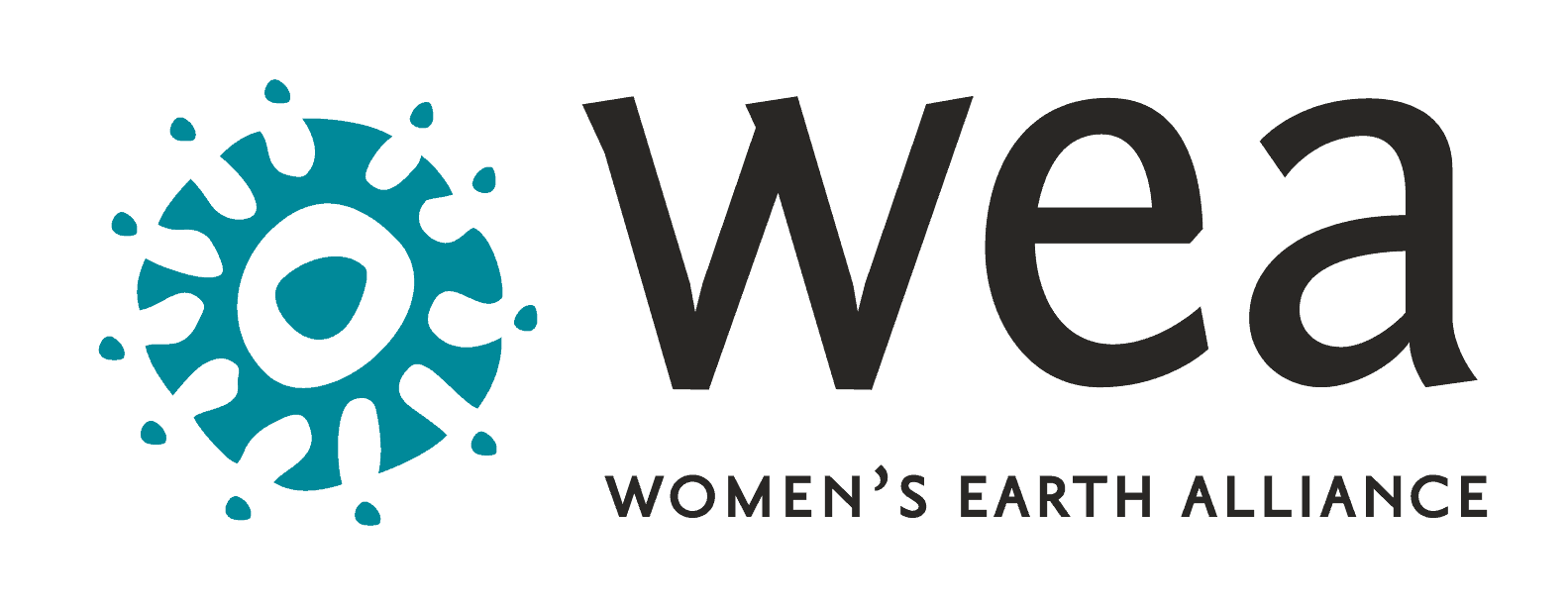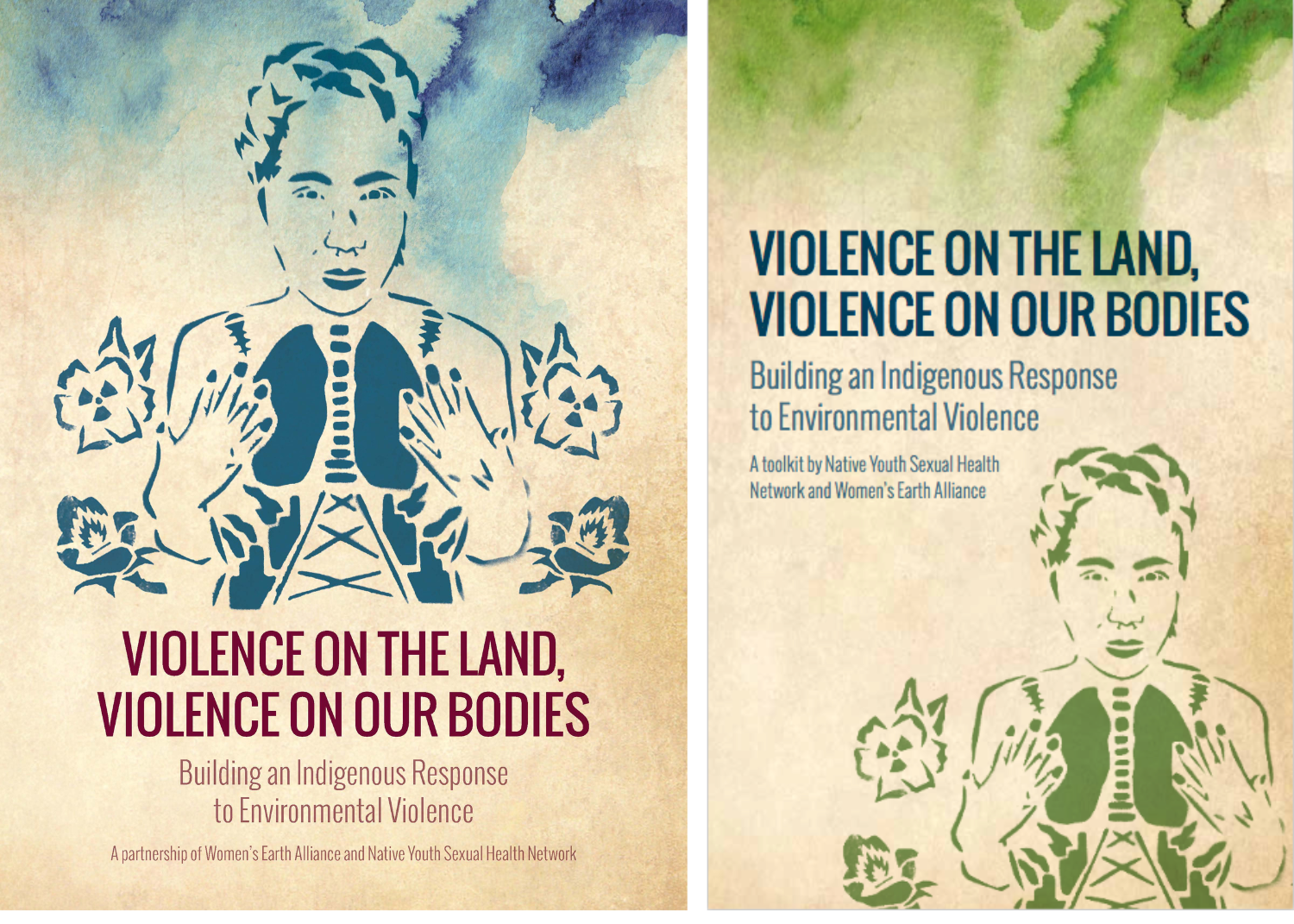Women on the Frontlines: Climate Change, Gender-Based Violence, and Reproductive Rights
By: EngenderHealth and Women’s Earth Alliance
We often hear that those who have contributed the least to the climate crisis bear its most severe consequences, and women—especially those from marginalized communities — shoulder a disproportionate burden. The United Nations Development Programme found that 80% of those displaced by climate change are women and that women are 14 times more likely to die in a climate-related disaster than their male counterparts, underscoring the urgency of addressing the gendered dimensions of this crisis. But gendered inequality in the context of climate change doesn’t just manifest in displacements and deaths; it deeply affects our bodies, livelihoods, and well-being in ways that vary across the intersections of gender, race, class, sexual identity and orientation, and geography. The consequences on reproductive health, fertility, maternal health, and access to essential health services ripple across families and generations.
While the effects of climate change are often discussed in broad terms, its profound impact on sexual and reproductive health and rights (SRHR) and gender-based violence (GBV) is still not fully addressed. Research shows that women—particularly those from Indigenous, Black, and LGBTQ+ communities—face heightened risks in these areas as climate change exacerbates existing inequities. If left unaddressed, the global progress made in addressing gender equality, SRHR, and GBV could backslide, especially in the face of accelerating climate crises.
Addressing these challenges requires a deeper understanding of how climate change worsens existing vulnerabilities and endangers the overall well-being of affected communities.
While it’s essential to highlight the impact of the climate crisis on SRHR, it’s also critical to recognize that SRHR are key to supporting and strengthening both gender equality and climate resilience. Healthy women are better equipped to care for their families and communities, helping them withstand extreme weather events and adapt to the shifting climate. A holistic approach to SRHR strengthens community resilience and contributes to long-term sustainability.
Taking a human-rights approach to SRHR and its intersections with climate change is vital. In sum, the solutions to the climate crisis do not rely on controlling women’s bodies but on addressing the systemic inequalities and harmful practices that are at the heart of climate change, GBV, and the denial of sexual and reproductive health rights.
The Disproportionate Impacts of Climate Change

The systemic inequities related to environmental degradation and social injustice are rooted in long-standing systems of oppression, such as colonialism and environmental racism, which have historically targeted Indigenous lands and communities of color for resource extraction and industrial pollution. In the United States, Indigenous women and women of color are more likely to live in areas contaminated by toxins—outcomes of discriminatory policies like redlining and the systematic exploitation of Indigenous territories. Globally, the impacts are similarly stark—despite contributing less than 1% of global emissions, low-income countries, primarily in the Global South, bear the harshest consequences of climate change, from droughts and floods to sea-level rise and extreme heat.
Women’s Earth Alliance (WEA) addresses these disproportionate impacts by empowering women's leadership to protect the Earth, address the climate crisis, and ensure a just, thriving world. Since 2006, WEA has supported over 52,000 women leading environmental projects in 31 countries. Through technical training, financial resources, and collaborative global networks, WEA equips grassroots women leaders to develop scalable, community-based solutions for climate resilience, health and safety, conservation and stewardship, food security, sustainable livelihoods, energy justice, and more.
Our work recognizes that women in many regions are uniquely vulnerable to climate-induced challenges such as food insecurity, displacement, and loss of livelihoods. Their roles as caregivers, farmers, and water collectors—combined with entrenched social and systemic gendered inequalities—put them at greater risk, especially in rural and low-income areas where access to resources is limited. The 2004 tsunami in Indonesia starkly revealed the gendered nature of climate disasters, with women accounting for nearly 70% of the casualties. This was due to the fact that women—many of whom were not taught to swim and were unable to climb to safety—stayed behind to search for their children or other relatives under their care.
Though climate change impacts are felt globally, its most severe and lasting consequences fall disproportionately on marginalized women, including those living in poverty, Indigenous women, and women of color. This deepens existing inequalities and threatens to unravel hard-won progress in gender equality. As climate change continues to drive displacement, food insecurity, and loss of livelihoods, it also worsens vulnerabilities related to SRHR and GBV—placing women’s health, safety, and autonomy at greater risk.
Recognizing and addressing these intersecting crises is crucial as we strive to build stronger climate resilience and justice. Without acknowledging the gendered dimensions of climate change, we risk exacerbating existing inequalities and undermining the well-being of those already most affected.
Key Intersections: Sexual and Reproductive Health and Rights (SRHR) and Climate Change
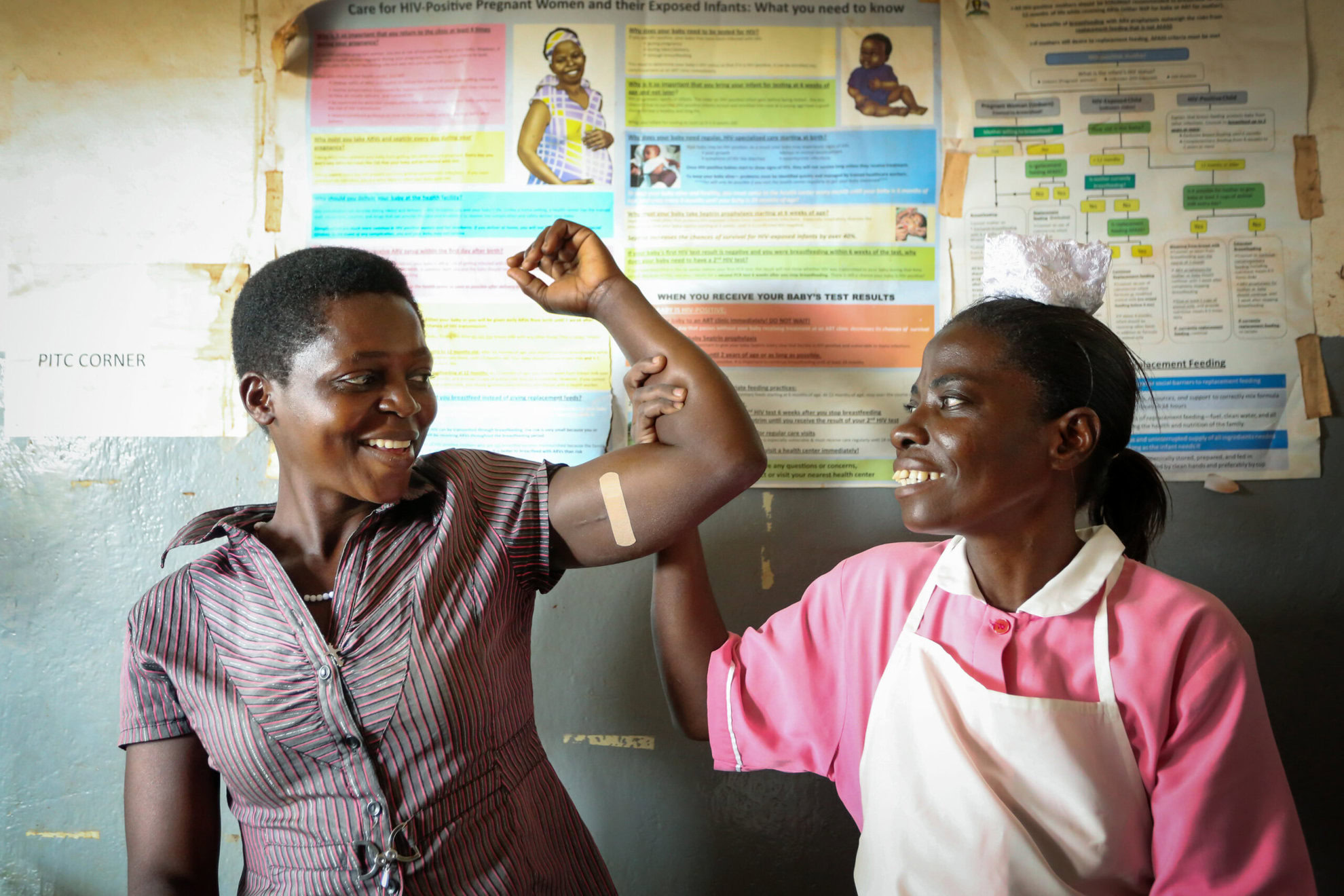
At EngenderHealth, we collaborate with diverse partners like WEA to eliminate barriers to healthcare and build resilient, equitable systems for universal health coverage. Our initiatives extend into humanitarian settings, strengthening health systems and communities to withstand the shocks of climate change-induced disasters. Individuals in areas affected by climate change or humanitarian crises face barriers to accessing essential healthcare services. Climate-related emergencies cause major disruption in access to life-saving health services and supplies, including those for contraception and safe abortion.
The climate crisis is increasing the frequency and intensity of extreme weather events. Rising temperatures, for example, impact reproductive health in direct and indirect ways. Heat stress (unusually high temperatures and heat waves) and pollution affect people’s menstrual cycles, pregnancy, and fertility and adversely affect pregnancy outcomes. Heat directly worsens maternal and neonatal health outcomes, including but not limited to premature births, low birth weight, stillbirth, and neonatal stress. Air pollution has similar negative impacts.
The intersection of SRHR and climate is one place where multiple forms of discrimination and heightened vulnerability come together. Those who suffer the most from climate impacts often don’t have access to the finances, services, and status required to increase their adaptability and resilience. Through community-centered solutions focusing on SRHR, EngenderHealth enhances resilience against climate shocks, striving for a sustainable and inclusive future that empowers women, girls, and marginalized communities. These solutions include, for example, efforts to bolster the capacity of village health solidarity committees to develop local funding mechanisms and emergency transport set-up in a project in Mali.
Extreme weather events such as floods, typhoons, or earthquakes that force people from their homes and communities contribute to challenges in providing sexual and reproductive healthcare, and those with already diminished health struggle more when they have to leave their homes. People living at internally displaced persons (IDP) sites and refugee camps are particularly vulnerable to risks related to SRHR and have limited access to critical SRH services, including decreased access to their routine medicines and to trusted healthcare providers. When people are displaced or there’s water insecurity, maternal and newborn health, access to clean water, food security and nutrition, menstrual hygiene, and GBV are especially critical issues.
Key Intersections: Gender-Based Violence (GBV) and Climate Change
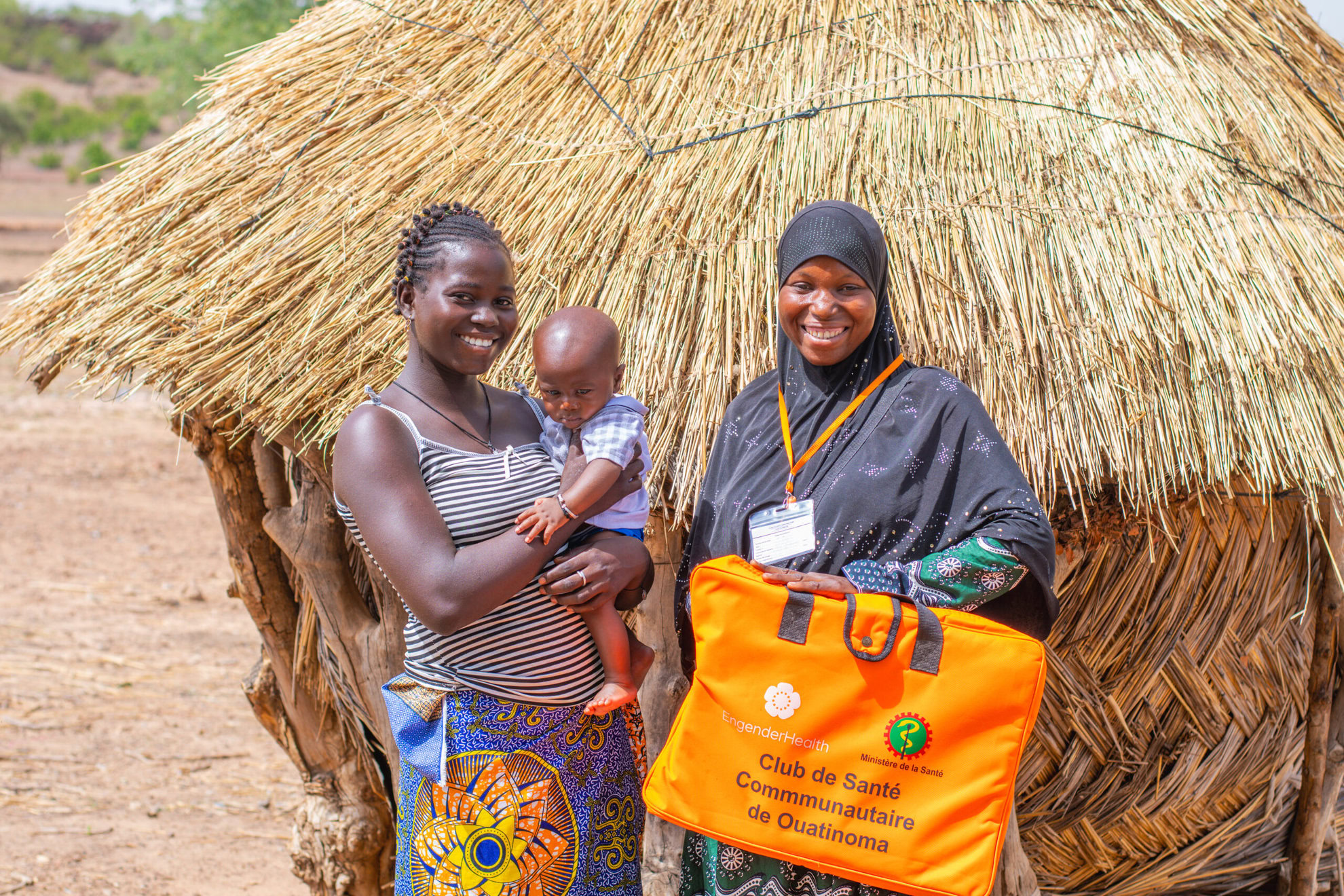
The climate crisis is a humanitarian crisis, and climate-related disasters are disrupting livelihoods, increasing human rights abuses, and exacerbating the displacement and vulnerability of civilians. The International Committee of the Red Cross has named people enduring existing conflicts as the “most vulnerable to the climate and environmental crisis, and among the most neglected by climate action, in part because of challenges associated with working in such surroundings.”
For example, an estimated 4.5 million people are currently displaced in Ethiopia (as of June 2024). Ethiopia’s humanitarian crisis is a growing challenge that disproportionately affects women, girls, and young people. The country also hosts 823,000 refugees and asylum seekers, predominantly from South Sudan, Somalia, and Eritrea—47% of whom are women and girls, while 59% are children. Women are more vulnerable to GBV in shelters or camps and often lack the agency and ability to access medical care and SRH services. As we shared earlier, eighty percent of people who are displaced by climate change are women and displaced women are at greater risk of violence, including sexual violence.
GBV is one of the most widespread human rights violations globally and a significant public health concern, posing a major obstacle to achieving gender equality, the United Nations Sustainable Development Goals, and other human rights obligations. A new report by the United Nations Population Fund found that rising global temperatures are leading to higher rates of intimate partner violence in sub-Saharan Africa. If left unaddressed, domestic violence is projected to triple by 2060, affecting tens of millions of girls and women—underscoring the urgency of addressing the climate crisis and its far-reaching impacts on vulnerable communities.
In the Boucle du Mouhoun region of Burkina Faso, an EngenderHealth program is reaching those in need at the intersection of various crises. By supporting the provision of primary healthcare, addressing GBV, managing malnutrition, enhancing water, sanitation, and hygiene (WASH) infrastructure, and strengthening community health systems, EngenderHealth is creating a more resilient and dignified setting for those displaced by crisis and their host communities. This year, the project ensured the availability of key health resources, distributing menstrual hygiene kits, post-rape kits, kits for severe acute malnutrition with complications in health facilities, and clean birth delivery kits. The project also used educational messaging to encourage healthy behaviors producing radio programs and educating communities on WASH and GBV prevention and the availability of care.
Key Intersections: Gender-Based Violence (GBV) and Extractive Industry in North America
In North America, the intersecting threats of climate change and GBV are particularly acute for Indigenous and Black women, who already experience disproportionately higher rates of maternal mortality and violence compared to white women. WEA’s work over the years has shown that climate change compounds these existing inequalities, especially for frontline communities living near extractive industry facilities, processing plants, and other heavily polluted sites or “sacrifice zones,” where the exploitation of natural resources is deeply tied to both environmental and social violence.
In 2014, WEA and the Native Youth Sexual Health Network (NYSHN) began a multi-year initiative to document how extractive industries impact North American Indigenous women and young people’s safety and health. The resulting report and toolkit, Violence on the Land, Violence on Our Bodies: Building an Indigenous Response to Environmental Violence, highlights how the arrival of extractive industries, such as oil drilling, natural gas, and mining, in Indigenous territories is often accompanied by an influx of a largely male transient workforce. This influx has been linked to rising rates of sexual violence, domestic violence, and human trafficking in Indigenous communities. These "man camps" near extraction sites create environments that heighten the risk of GBV.
For instance, in the Bakken oil fields of North Dakota, WEA and NYSHN’s research documented how the establishment of “man camps” coincided with a significant increase in GBV. This aligned with data from the National Crime Information Center which reported 5,712 cases of missing Indigenous women in the U.S. in 2016, with many cases occurring near areas impacted by extractive industries. This epidemic of missing and murdered Indigenous women, girls and Two Spirit people (MMIWG2S) starkly demonstrates the connection between GBV and climate change-inducing industries. As Professor Inés Hernández-Avila notes, the violence inflicted on Indigenous women is a direct attack on their ability to defend their lands and communities from exploitation.
WEA and NYSHN’s work also documented that the environmental violence caused by extractive industries extends to long-term health impacts of pollution. Pollutants like heavy metals, toxins and pesticides released into the environment accumulate in women’s bodies and can be passed on to children during pregnancy and breastfeeding. This form of GBV has devastating intergenerational consequences, affecting both physical and reproductive health. The toxins released by these industries don’t just harm the land, water, and ecosystems—they cause direct and disproportionate harm to Indigenous women and young people.
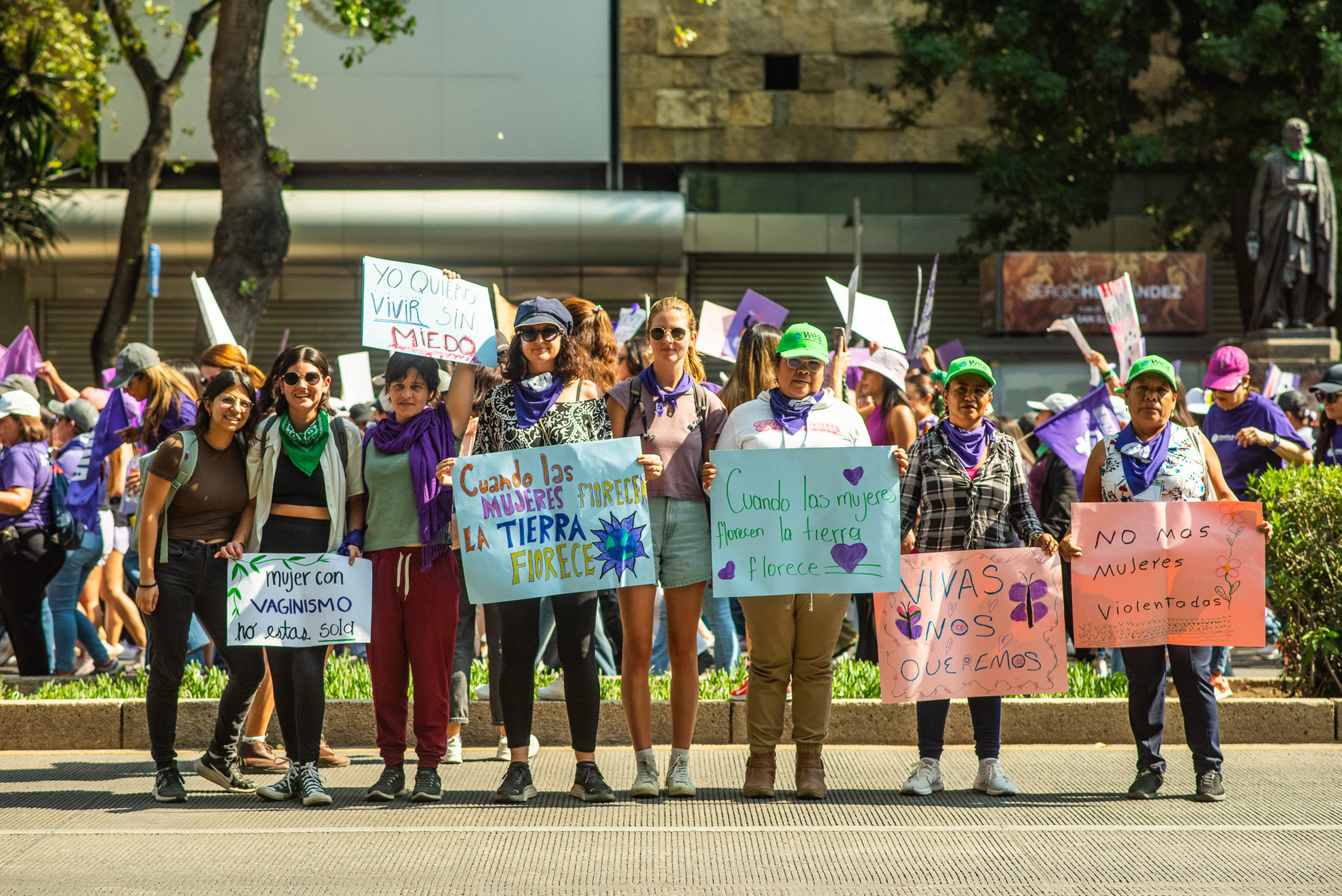
WEA’s work in Mexico has shown similar challenges and injustices. Our Mexico program focuses on regenerative health as a direct response to the intersecting crises of climate change, GBV and socio-economic disparities faced by women, particularly environmental defenders. This program works with locally- and women-led groups to strengthen women’s leadership and promote food sovereignty, climate resilience, and health equity. Across Mexico, women face persistent GBV, sexual violence, criminalization, death threats, surveillance, theft, property violence, and more. Powerful vested interests in industries like mining and logging, which contribute to environmental degradation and climate change, coupled with deep and systemic corruption, make climate activism particularly dangerous—especially for women environmental defenders. Mexico has one of the highest and fastest-growing rates of femicide in the world, with more than 3,000 women murdered each year. This pervasive crisis is fueled by systemic gender disparities, entrenched machismo, and a flawed justice system characterized by police apathy towards missing women, inadequate investigations, and revictimization by prosecutors and judges. Of the 67 women murdered globally between 2020 and 2022 for being environmental defenders, 11 were Mexican; among them, nearly half were Indigenous.
These case studies illuminate how addressing GBV in the context of climate change is essential to advancing climate justice. Policies and efforts to address climate change and promote resilience that do not center gender equity as a key strategy are poised to be ineffective—and even harmful. The compounded impacts of violence and environmental destruction on women demand a holistic approach that centers their rights and voices in the fight against climate change.
Advocacy and Strategies for Moving Forward
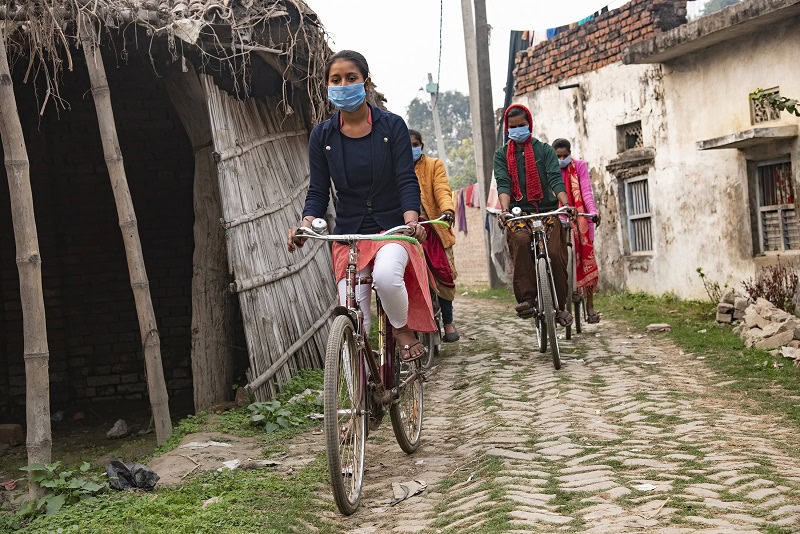
The SRHR and climate movements must advocate together for policies at all levels that address the intersections of climate change, SRHR, and GBV. We need community-centered solutions that address intersectional vulnerabilities, rather than placing the burden of responsibility on individuals.
Women are on the frontlines of the climate crisis—we all must work together to ensure they are healthy, able to control their reproductive choices, and free from violence, so that they can lead their communities in adapting to the climate crisis. Research shows that women play a critical role in helping their families and communities survive extreme weather events and adapt to climate change. It is crucial to include women in decision-making processes for climate action at every leadership level.
Acknowledging the compounding inequalities of climate change and the undue burden women face as a result of ecosystem destruction and environmental violence is only the first step in addressing the climate crisis. This recognition must be paired with intentional strategies that amplify women's meaningful participation in climate action. As the G20 affirmed, “gender equality is of fundamental importance, and… investing in the empowerment of all women and girls has a multiplier effect in implementing the 2030 Agenda [for Sustainable Development].”
This understanding is at the heart of WEA’s work. We work alongside and in partnership with community-based, women-led groups around the world to implement inclusive initiatives at the intersection of climate and gender. For instance, WEA program partner, Organización de Mujeres Ayuujk Poj Kää, works within the Indigenous Ayuujk community of Tlahuitoltepec, in the Sierra Mixe in Oaxaca, to support women, girls, and young people to learn about agro-ecology, medicinal plants, and land rights while educating community members about the violence inflicted on Indigenous women’s bodies through forced sterilization. Poj Kää is also revitalizing traditional Ayuujk midwifery practices and increasing access to sexual and reproductive education and healthcare services within their community.
EngenderHealth has worked for many years at the global, national, and local levels on SRHR, locally-led development, youth engagement, and gender equality. Our shift to incorporate climate-related work has risen along with the recognition of how urgent the climate crisis is. We have partnered with organizations and government agencies to address the intersections between climate, SRHR, and GBV through collaboration, education, and training. We advocate for using existing mechanisms to ensure that SRH needs are met through global response systems. For example, EngenderHealth recently adapted the Inter-Agency Working Group on Reproductive Health in Crises’ global Minimum Initial Services Package for SRH in humanitarian setting training manuals for the Ethiopian context. We also recommend using GYSI tools that center the experiences of youth and other marginalized groups in advocating for SRHR and climate resilience.
More research is needed to fully understand the intersections of SRHR and climate, particularly through a lens that considers multiple, overlapping vulnerabilities and engages affected communities. It is equally essential to recognize SRHR as a vital component of adaptation and resilience-building efforts in climate policy, funding, and action.
Conclusion
All people deserve access to the full range of SRHR and the opportunity to live healthy, stable lives. Achieving comprehensive SRHR will not be possible if solutions, policies, and processes replicate colonial practices or fail to proactively incorporate climate change as a key focus. Similarly, climate justice initiatives must address the racial, social, economic, and gendered inequities of climate impacts, while ensuring that the voices of those most affected are at the heart of decision-making and solution generation.
WEA and EngenderHealth are united in our vision of creating more equitable and just societies by advancing gender equity. We recognize that neither gender equity nor climate justice can be fully realized without the other.
Climate change and gender inequity are two of the most pressing issues of our time, and neither will be solved by the actions of one community or organization alone. We must come together to build resilience and address global inequalities, prioritizing intersectional approaches centered on equitable partnerships and locally-led development. By doing so, we can fortify and amplify solutions born from the heart of communities—where people are grappling with our gravest challenges and creating blueprints for a thriving future.
EngenderHealth is a leading global health organization committed to advancing sexual and reproductive health and rights and gender equality. We support individuals in making free, informed decisions about sexuality and childbearing so they can live the lives they want. We collaborate with local communities and civil society organizations to prioritize health and rights. And we partner with health systems and governments to provide sustainable, high-quality services and a policy environment that supports access to care. We are internationally recognized for our expertise and impact in: sexual and reproductive health and rights, maternal and obstetric care, and addressing gender-based violence. Our programs are designed to address harmful gender norms, increase meaningful youth participation, and support health systems strengthening, which is critical to achieving universal health coverage. Learn more at engenderhealth.org.
Women’s Earth Alliance (WEA) empowers women’s leadership to protect our environment, end the climate crisis, and ensure a just, thriving world. Since 2006, WEA has supported over 52,000 women leading environmental projects in 31 countries, ensuring health, safety, economic stability, educational opportunities, and well-being for thousands of women—all while proliferating life-saving solutions like safe water and sanitation, food security, clean energy, waste management, and reforestation. WEA invests in and equips grassroots women leaders with the technical tools, entrepreneurial skills, financial resources, and networks of support they need to scale their solutions for change—because when grassroots women leaders take action to prevent environmental destruction and build healthier and more climate resilient communities, real transformation takes root. Learn more at womensearthalliance.org.
